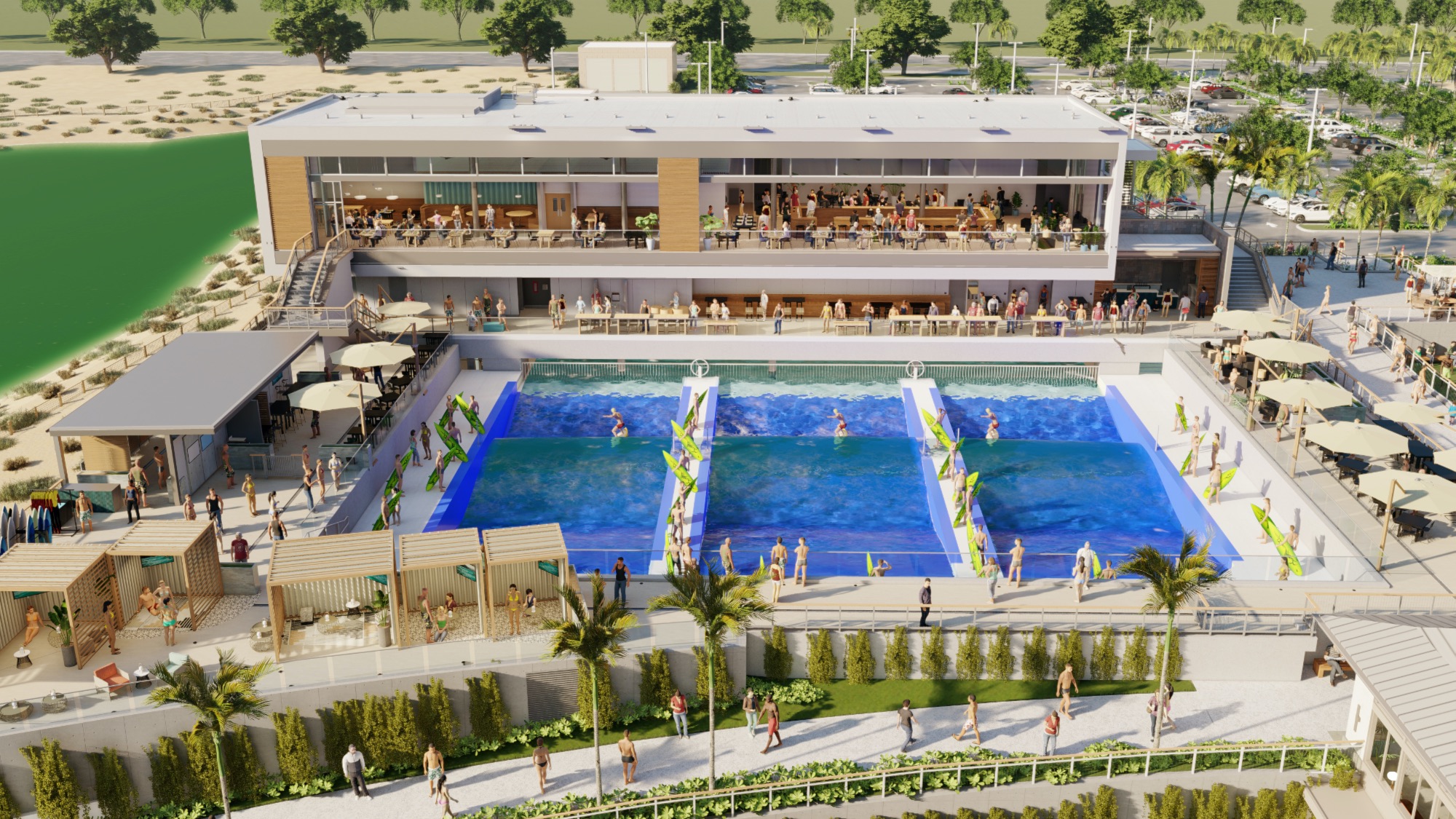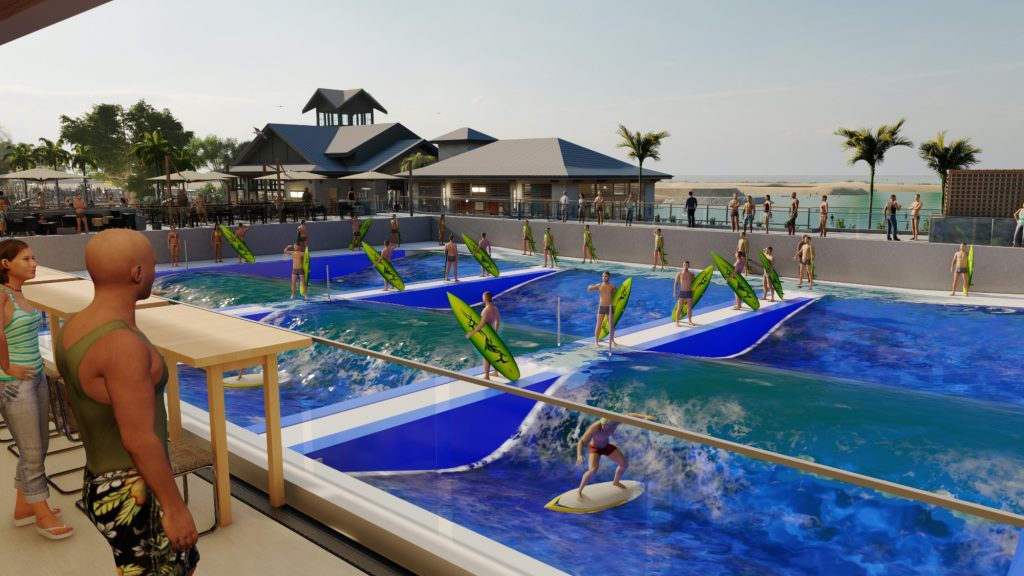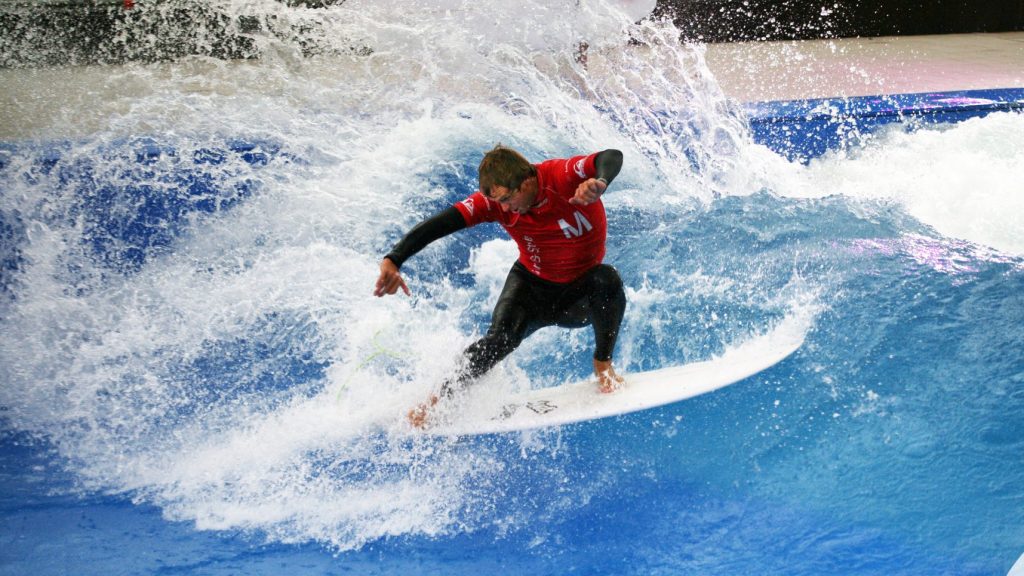World’s largest deep-water standing wave breaks ground on Oahu

Developers announced today that construction is underway on The LineUp, the anchor attraction to the Wai Kai waterfront facility at Hoakalei Resort in Ewa Beach in West Oahu.
Wai Kai will feature what’s labeled by developers as “the world’s largest deep-water standing wave.” Built by CityWave, the 100-feet-across structure will host three surf areas sitting side-by-side.
Citywave machines run between €1 million and €2 million (for standard-size machines) and are currently in development throughout the world in places like Osnabrück, Germany, Israel and Moscow. Citywave recently completed a huge artificial wave system near Seattle, Washington that is 50-feet across.
The Wai Kai Wave was created in collaboration with former World Tour competitor Shane Beschen (a partner in The LineUp at Wai Kai’s operating company)
“The surfing will be similar to Oahu’s Waimea Bay river wave that flows periodically when the sand bar opens up after heavy rainfall periods – but on steroids,” said Shane. “Everything from high-speed carving turns to sections for attacking the lip or doing airs are all possible here. It creates the perfect on-demand setup.”

Standing wave pools work via a series of high-power water pumps that send fast torrents of water through jets, chutes or ramps that lead to the main pool. The fast-flowing water meets a submerged structure or reef and creates a surf-able wave that can be varied in size and shape by simple adjustments of the water speed and the wave-forming ramp (plus a few other factors)
The important takeaway is that the resulting waves are “deepwater” waves, meaning regular surf equipment with full-size fins will work here. Sheet waves, like the original FlowRider, require specialized boards resembling finless skateboard decks. Deepwater standing waves allow you to use your favorite stick, so the surf-sensation is similar to surfing on a moving wave.
“Standing waves are obviously different than paddle-in waves because the water is coming at you,” added Shane. “But with Citywave (and other tech) being a deep-water standing wave, it allows for real surfboards and fins which allows you to get a similar feeling when doing big carves.”
Surf park builders like standing waves because they don’t require a large plot of land and an eight-figure investment. Consequently, developers with less space, like in urban areas, can spend $1-$2million on a standing wave as opposed to the $12-$25million traveling wave pool price tag.

Citwave started 20 years ago when Eisbach river wave surfer Rainer Klimaschewski saw the potential of taking the wave out of the Eisbach and putting it in a pool.
“The wave is adjustable in water-pressure and speed to serve all different skill levels of surfers,” said Dennis Klimaschewski Head of Business Development at CityWave. “It works for everyone from absolute beginners to advanced and even pro-surfers. With its patented deep-water technology, we deliver the most authentic surf feeling and the wave serves as the perfect training tool to transfer your skills to the ocean.”
The Wai Kai Wave overlooks the 52-acre Wai Kai Lagoon, which will offer a sheltered area for stand up paddling, kayaks, guided outrigger canoes, and piloted electric boat cruises.
Developers said the theme for the LineUp is to create an authentic waterman experience and will offer major professional and amateur surf and waterman competitions. It will be managed by Surf Park Management.
Wai Kai is anticipated to open in 2022.
Related Coverage
